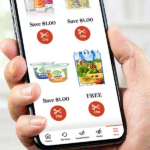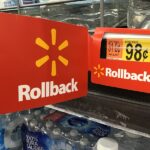
Several recent studies have observed that coupons for food are harder to come by lately. But you may have better luck feeding your family for less – if you go digital.
That’s according to Kantar Media, and a new report about the state of digital coupons.
The number of digital coupons distributed in the first half of 2015 was up 16.7%, Kantar found. That’s despite the fact that overall coupon distribution declined, according to mid-year statistics from Inmar.
And the reason digital coupons saw such a spike? More coupons for food. “The dry grocery area, which is historically the largest area in digitally distributed coupons, accounted for much of the growth,” Kantar reports.
That’s in sharp contrast to the overall state of food coupons. Inmar’s mid-year report found that just 37% of all coupons distributed so far this year, were for edible items.
And they’re not worth much, either. While the average value of nonfood coupons in the first half of 2015 was $2.10, the value of food coupons was about half that amount, at $1.11. Not only that, but more food coupons required you to buy multiple items to get the deal.
That doesn’t necessarily mean that food companies want you to pay more for their products. Instead, they may be shifting some of their couponing efforts from paper to digital. That gives them much more control over their coupons’ availability and attractiveness.
That’s because, unlike paper coupons, digital coupons’ face values, purchase requirements and expiration dates can be changed at will. “Manufacturers often apply different strategies and tactics to their digital promotions compared to print promotions and will adjust digital promotions on the fly, depending on how quickly shoppers respond to digital incentives across various websites,” Kantar’s Darcy Douglas said in a statement.
Still, even a significant increase in digital food coupons may not amount to much. According to Inmar, newspaper insert coupons still make up more than 90% of all coupons distributed, while digital coupons represent a fraction of one percent.
Ultimately, Kantar concludes, it’s not the distribution method but the offer itself that matters. Face values, or incentives, “are a critical part of a digitally distributed promotion,” Douglas said, “and misaligning your incentives could mean the difference between a brand offer being clipped or printed or just ignored.”
One more telling statistic – while, as previously mentioned, just 37% of available coupons so far this year were for edible items, 62% of all coupons redeemed were for food. So it seems that shoppers want to use coupons for food, much more than companies are willing to offer them.
Getting discounts on health, beauty and personal care products is nice. But you can’t feed your family toothpaste and soap for dinner. And if those are the only types of coupons you’re seeing in your Sunday paper these days, it may be time to go digital.
Otherwise, your family may not be too pleased with what they find on their dinner plates.
Photo by epSos.de











When will the companies wake up and realize not everyone has a smartphone? Digital Qs for Kroger already offend the folks that don’t have a computer at home. $$ for phone and $$$ for service is a waste of money for some of us that might use a phone twice a week.